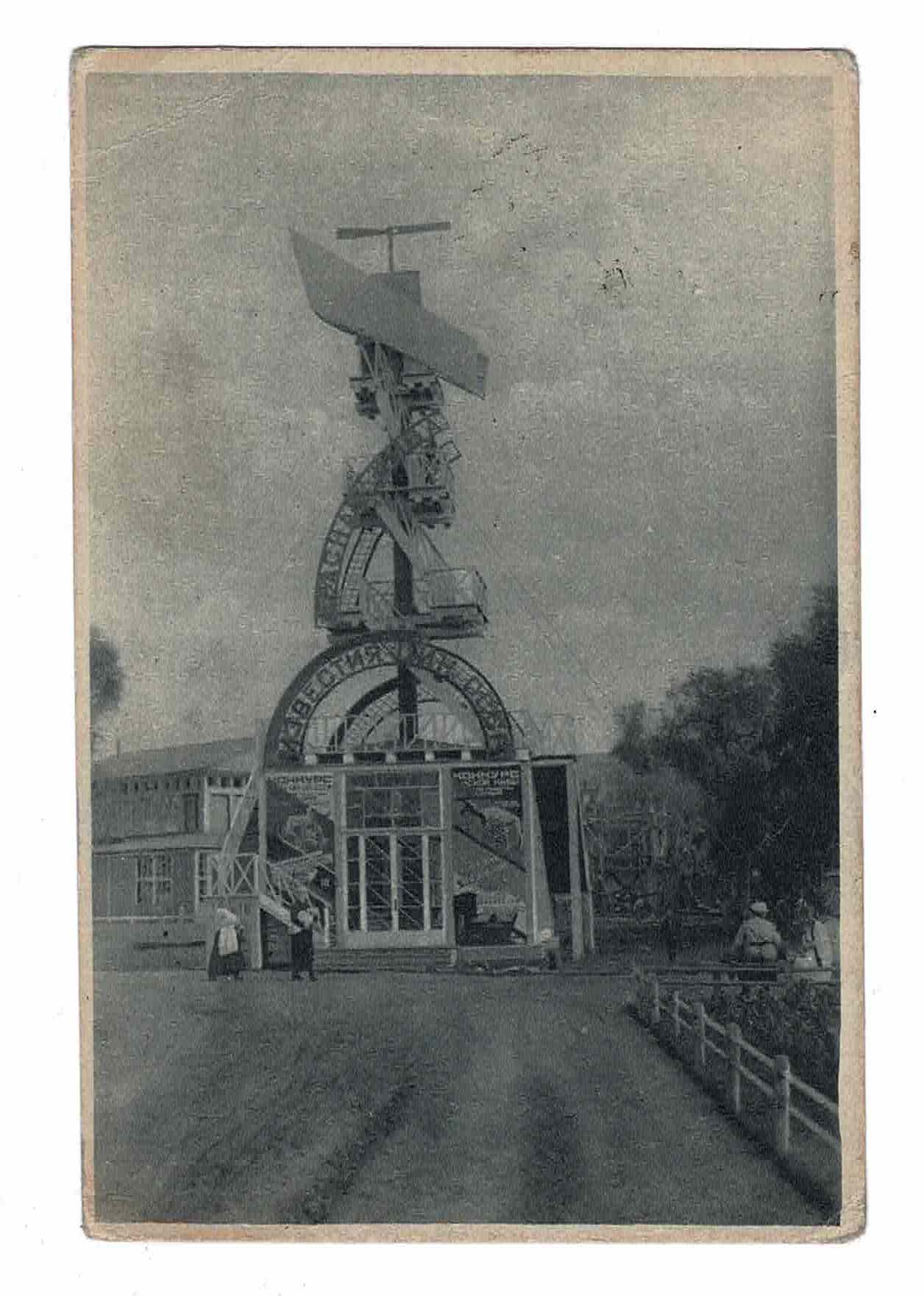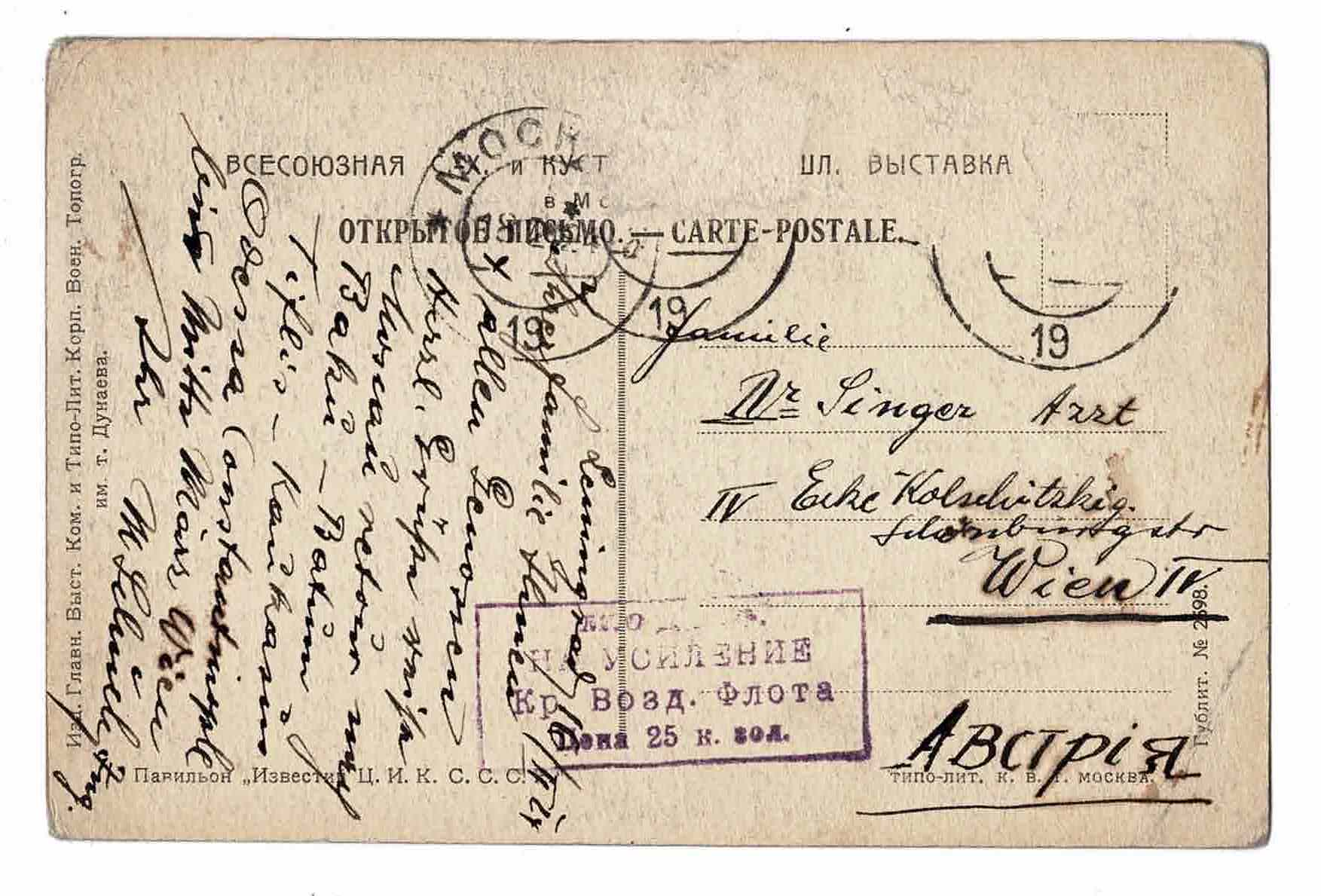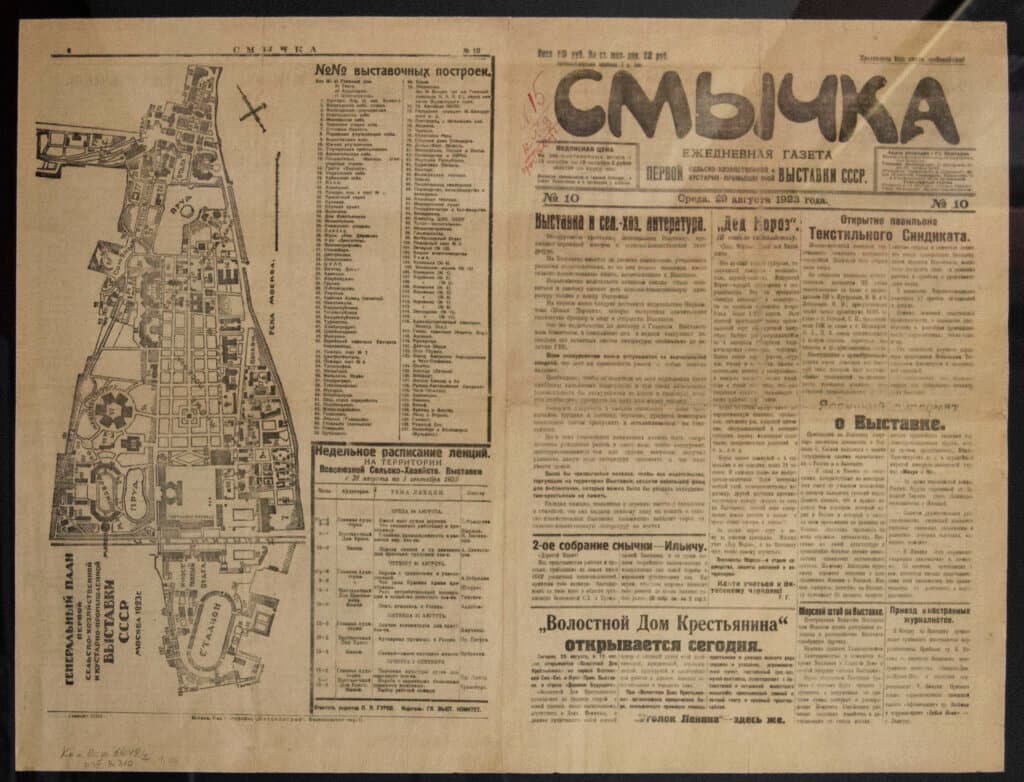Bulgakov’s ‘Golden City’ (1923)

This text is an excerpt from Mikhail Bulgakov’s series of short vignettes that appeared under the overarching title ‘Golden City’ and were serialised in the Berlin-based Russian migrant ‘Nakanune’ newspaper between 30 September and 14 October 1923. Bulgakov was commissioned to write an account of the first and only All-Russian Agricultural and Industrial Crafts Exhibition, which took place on the Sparrow Hills, Moscow, between 19 August and 21 October 1923. Having visited the exhibition twice with a two-week gap between visits, Bulgakov primarily focused on the spirit of this widely-attended exhibit and the people who came to it, describing the pavilions and their contents more as backdrops for the people. Part 2 of 13, titled ‘On the Moskva River’ shows his first time arriving to the Agricultural and Handicraft-Industrial Exhibition and presents a busy scene at the entrance to the fair.
The photograph on the exhibition postcard shows a view of the ‘Izvestiya’ newspaper pavilion designed by Aleksandra Aleksandrovna Ekster and Vera Ignatyevna Mukhina and engineered by Boris Vladimirovich Gladkov. This pavilion is unique as it is possibly the only example of Ekster’s and Mukhina’s design being part of an architectural construct: their other works were reserved to the visual arts and sculpture respectively. The ‘Izvestiya’ newspaper pavilion was a rectangular room made out of triangular glass shapes and a tower with several flights of stairs that led to three or four observation platforms of different sizes. The structure displays the name of the ‘Izvestiya’ newspaper as well as its supplement ‘Krasnaya Niva’ and is capped with a propeller.

Excerpt from ‘On The Moskva River’ by Mikhail Bulgakov. Translated from the Russian by Cyril Babeev.
The August evening is clear. Flying in the dusty haze along the Garden Ring are the rumbling boxcars of tram ‘B’ with a red notice: ‘To the exhibition’. Loads and loads. Trucks and light cars are overtaking, raising a cloud of dust and gasoline smoke.
On Smolenskiy Boulevard, the crowd is increasing. Among the hats of various sizes rises a white turban, amongst the backs of jackets – a striped back of a Bukhara khalat-robe. Also some kind of saffron-coloured high-cheekboned faces, slanting eyes.
The Kamenny Bridge appears from the gorge-like street with its sharp red spots of flags. Across the bridge, along the pedestrian paths, a stream of people pour and a flaky bus comes out to meet you, humming. A small town unfolds from the bridge. At first glance, in the setting sun on the banks of the Moskva River, it is light, airy, swift and golden.
The audience pours out of the tram, as if from a sack. On the sand-strewn spaces in front of the entrances, an anthill of people.
Tray sellers shout out:
‘Duchesse, sweet duchesse!’
And the cars bark, crawl, making their way through the crowd. At the stops a wall of people besieging the return ‘B’s, and at the ticket offices – queue tails.
And everywhere further there is tree, tree, tree. Fresh, cut, sawn, golden, formed into bizarre towers, pavilions, figures, towers.
The banks of the Moskva River separates the two worlds. On that side there are low, one-story, red, grey houses with the familiar comforts of everyday life, and on this one a scattered, sharp-roofed, pointed, prickly city-pavilion.
A well and tightly dressed figure with a gold chain on its stomach, gets out of the tram, panting, and looks over the violent crowd and mutters:
‘Who the hell knows them, really! It should have taken five years to build on this swamp, but they did it in five months! Manechka! We need find out where the restaurant is around here!’
Fat Manechka, thundering and sparkling with rings, bracelets, chains and cameos, bites into his jacket, and the couple hurries to the ticket offices.
The turnstiles creak, and the vendors and saleswomen of Air Fleet badges are swooping in from all directions:
‘Citizen, a badge! A badge!’
‘Newspaper ‘Smychka’ with a plan of the exhibition! Ten rubles! With a detailed plan!’
Sand crunches underfoot. To the right is a multicoloured, piece-made pavilion, as if made of children’s cubes.


– Teresa Stoppani